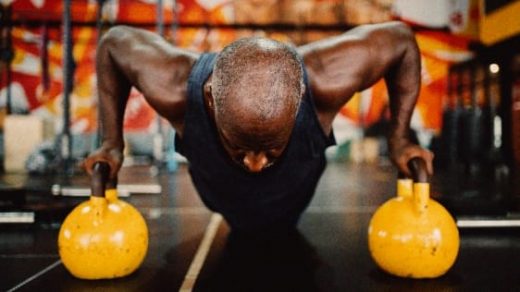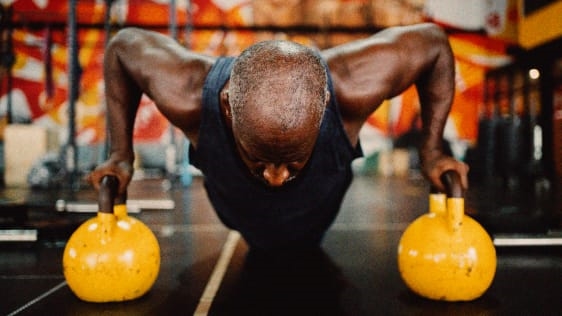Are you too old for high-intensity exercise? No, says study of 1,567 active seniors
Imagine old people dripping with sweat, exercising very intensely. This should be the norm, suggests the largest and longest randomized exercise study of that age group, just published this month in The BMJ.
Since 2012, researchers in Norway have followed 1,567 people in their seventies, who were randomly assigned to three types of exercise: twice-a-week high intensity interval training (HIIT) sessions at 90% peak heart rate; moderate twice-a-week sessions at 70% heart rate; and a control group of generally active people (1 in 5 turned out to be intense exercisers).
The first surprise is that almost all of the 1,567 participants are still alive and kicking, displaying substantially lower five-year mortality rates (around 5%) than expected in the age group (10%), suggesting that exercise is pivotal to long life.
But there’s more.
The HIIT exercisers showed the lowest mortality rates (3%), while the generally active group logged higher mortality rates (4.7%) and the moderate exercise group the highest (5.9%). Though a few percentage points might not seem significant, you’d likely feel differently if staring down the barrel of your eighties: The HIIT exercisers had half the mortality rate of the moderate exercise group.
The HIIT group also became fitter and sharper. “Both physical and mental quality of life were better in the high-intensity group after five years than in the other two groups,” says lead author Dorthe Stensvold, a researcher at the Norwegian University of Science and Technology. “The high-intensity interval training also had the greatest positive effect on fitness.”
This is particularly notable given that half the HIIT exercisers failed to actually do consistent high-intensity exercise—meaning that twice-a-week-or-less HIIT is likely the most efficient bang for your buck. Stensvold was also surprised that participants in all three groups stayed active over five years, indicating that the annual health and fitness evaluations that study participants received, as well as an every-six-weeks supervised session, may provide ample motivation.
One caveat: This study does not 100% prove that HIIT extends life, because participants in their seventies who sign up for an exercise study are likely a bit healthier than the average aging Scandinavian. It does strongly suggest that HIIT is generally effective for the age group.
The researchers hope that national exercise guidelines will be swiftly updated to state that some activity should be performed at high intensity. “By high intensity we mean training that gets you really sweaty and out of breath,” says Stensvold.
If you’d like to follow suit, the high-intensity group did HIIT 4x4s, where exercisers do four minutes of high intensity exercise followed by three minutes of active recovery, four times. The whole workout, including warmup and warm down, can be done in under 35 minutes.
(30)



